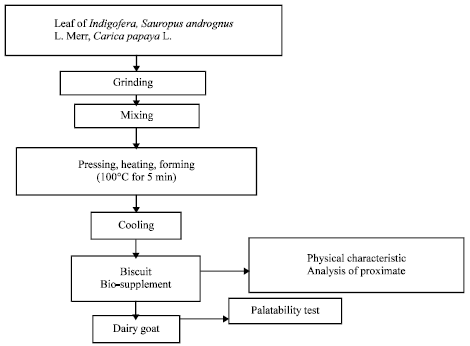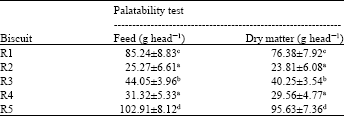Research Article
Physical Characteristic and Palatability of Biscuit Bio-supplement for Dairy Goat
Department of Nutrition and Feed Technology, Faculty of Animal Science, Bogor Agricultural University, Jl. Agatis, Kampus Darmaga, Bogor 16680, Indonesia
Idat Galih Permana
Department of Nutrition and Feed Technology, Faculty of Animal Science, Bogor Agricultural University, Jl. Agatis, Kampus Darmaga, Bogor 16680, Indonesia
Lia Christin Purba
Department of Nutrition and Feed Technology, Faculty of Animal Science, Bogor Agricultural University, Jl. Agatis, Kampus Darmaga, Bogor 16680, Indonesia













